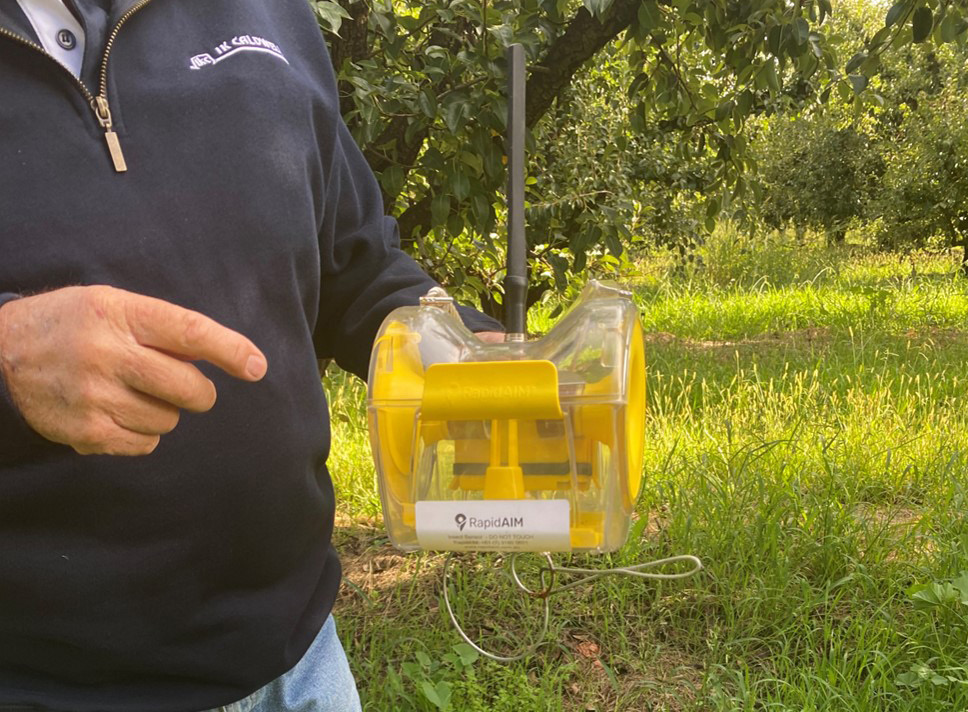A recent BASF-led tour of Australian apple orchards enabled Fruitfed Supplies staff to study the similarities and differences of technologies and techniques between our two countries.
“It was really interesting to see what Australian growers are doing in their orchards,” says Hastings-based Technical Horticultural Representative (THR) Lara Dunningham who joined five colleagues and two BASF staff, Tim Geuze and Pieter Steyn, on the tour of Victoria’s Yarra Valley, Shepparton in the Goulburn Valley and the Adelaide Hills in South Australia.
As earlier groups on similar tours have found, there are a lot of common experiences and insights to be shared as well as opportunities to learn about Australia-specific practices. One telling difference is that the larger Australian domestic market means fewer crops need to be managed to satisfy the more exacting standards imposed on export produce.
Lara says they visited orchards around Shepparton that grow pipfruit, stonefruit and nuts. “They’re focussed on supplying the fresh domestic market and local processing factories that produce cans and juice.”
Controlling codling moth is another good example. While codling moth pressure is higher in Australia than New Zealand, Australian growers supplying domestic markets have a wider choice of insecticides to draw on because their crops aren’t subject to export demands.
“Growers over there have access to pheromone traps that monitor insect catch in real time,” says Marcus Fitzsimmons, Fruitfed Supplies Hastings-based Extension Advisor. “The technology was originally developed for fruit fly monitoring and, clearly, the real time data helps growers react very quickly to a build-up in pest numbers.”
The real-time pheromone trap from RapidAIM

Lorikeets are an Australian problem that, thankfully we don’t have in New Zealand, says Marcus. “Cockatoos and rosellas also wreak havoc in some regions. The various breeds of parrots often fly and feed in very large flocks, so damage can be very intense. Growers use the usual bird control strategies, such as bird scarers, shooting (if it’s permitted in their area) and netting. We also saw netting to protect against hail damage, more than birds in the Yarra Valley.”
A perennial topic for apple industry participants is the relative appeal of different varieties. “We were shown a couple of varieties we don’t have locally,” says Hastings-based THR Richard Griffiths. “Bravo is an Australian variety with burgundy-coloured skin and contrasting white flesh, and Red Love, a red-fleshed apple that was bred in Switzerland.”
Lara observed that “Some people might not like the tartness of Red Love, but I found it very tasty.”
Other observations were the lower requirements for hygiene in the wider packhouse environmental, due to not supplying export markets, and seeing V-trellises used across the rolling hills around Adelaide Hills.
“It was great that BASF was able to facilitate the tour and that the attendees appreciated having the opportunity to see how our neighbours produce their crops,” says Tim Geuze. “There are certainly many challenges due to financial returns, employment, health and safety, and environmental issues that test growers in both countries. Here, we see the challenges of our growers capable of producing 90 tonnes per hectare of top-quality apples but only just breaking even. Something’s got to change, so it makes sense to look around and compare notes as we all try to work out what changes can be made to improve profitability.”